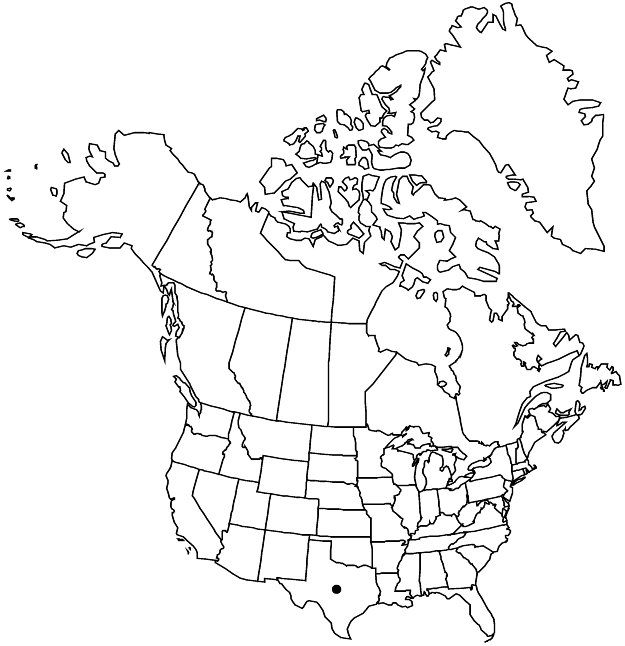Paronychia congesta
Brittonia 18: 307. 1967.
Plants perennial; caudex woody, branched. Stems erect, 6–10 cm, evenly puberulent with spreading hairs. Leaves: stipules lanceolate, 4–7 mm, apex acuminate, entire; blade linear or needlelike, 4–7 × ca. 0.5 mm, leathery, apex spinulose, puberulous. Cymes terminal, 7–28+-flowered, branched, mostly congested in clusters 5–15 mm wide. Flowers 5-merous, extended-urecolate, with prominent hypanthial bulge and calyx tapering somewhat distally, 2.8–3.1 mm, moderately pubescent with straight, spreading to appressed hairs generally throughout; sepals green to redbrown, veins absent or midrib and lateral pair of veins evident in fruit, lanceolate to oblong, 1.3–1.5 mm, leathery to rigid, margins translucent, less than 0.05 mm wide, scarious, apex terminated by awn, hood prominent, narrowly rounded, awn widely divergent, 0.5–0.7 mm, broadly conic in proximal 1/2–2/3 with yellowish, ± glabrous spine; staminodes subulate, ca. 0.5 mm; style 1, 2-lobed in distal 1/3–3/5, 0.5–0.7 mm. Utricles ± ovoid, 0.8–0.9 mm, ± smooth, glabrous.
Phenology: Flowering spring–summer.
Habitat: Thorn scrubland openings
Elevation: 200-300 m
Discussion
Of conservation concern.
Paronychia congesta is known only from two collections in Jim Hogg County.
Selected References
None.
Lower Taxa
"/10" is not declared as a valid unit of measurement for this property. "/10" is not declared as a valid unit of measurement for this property.
